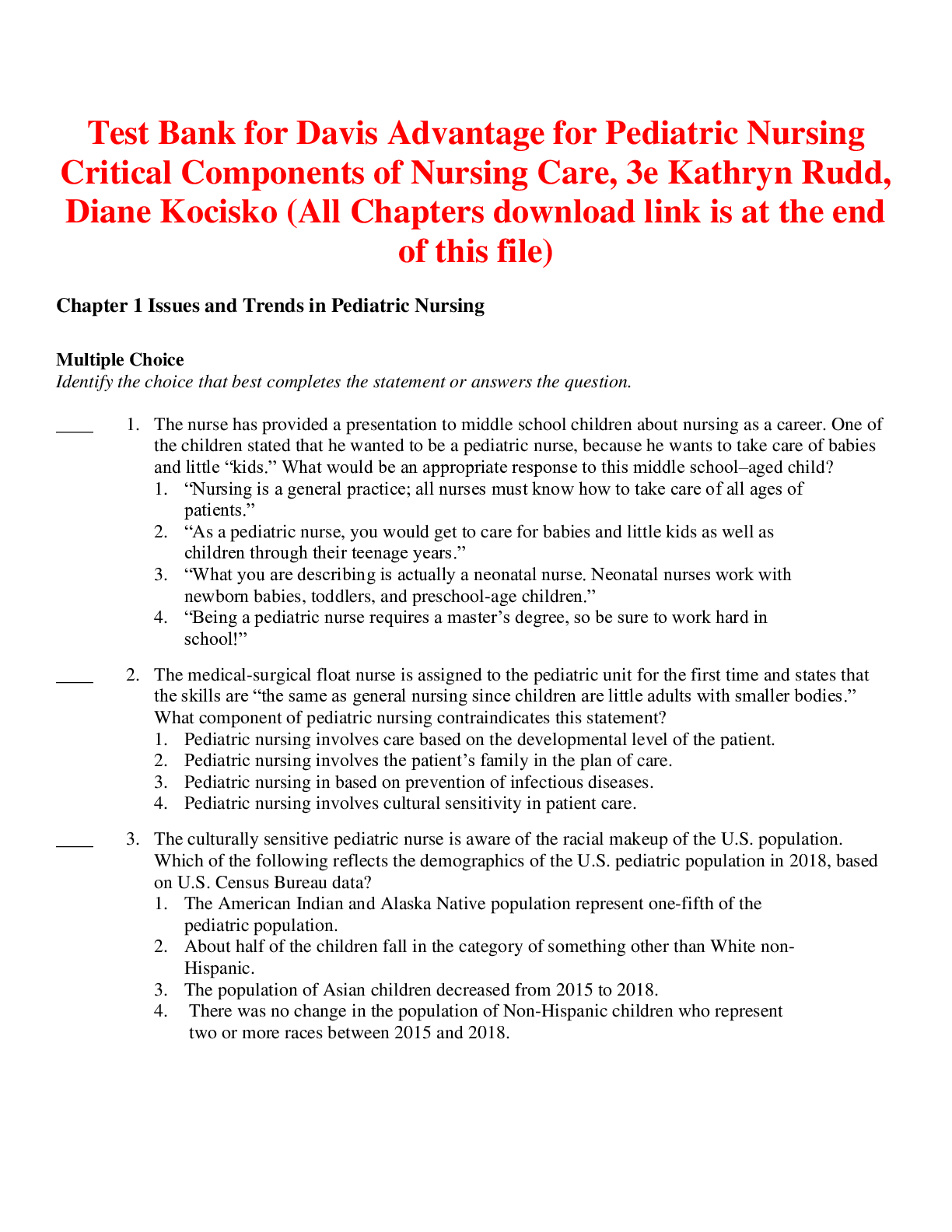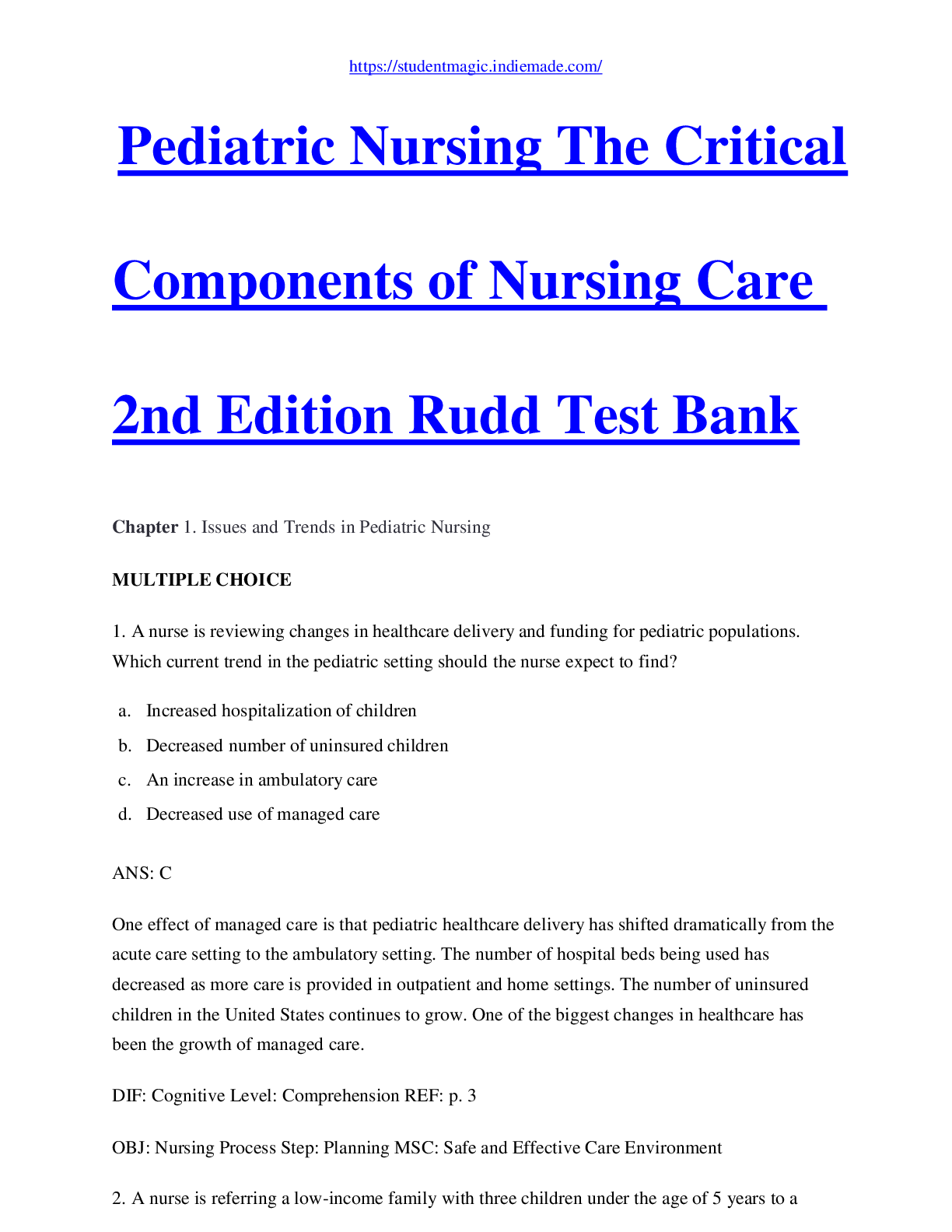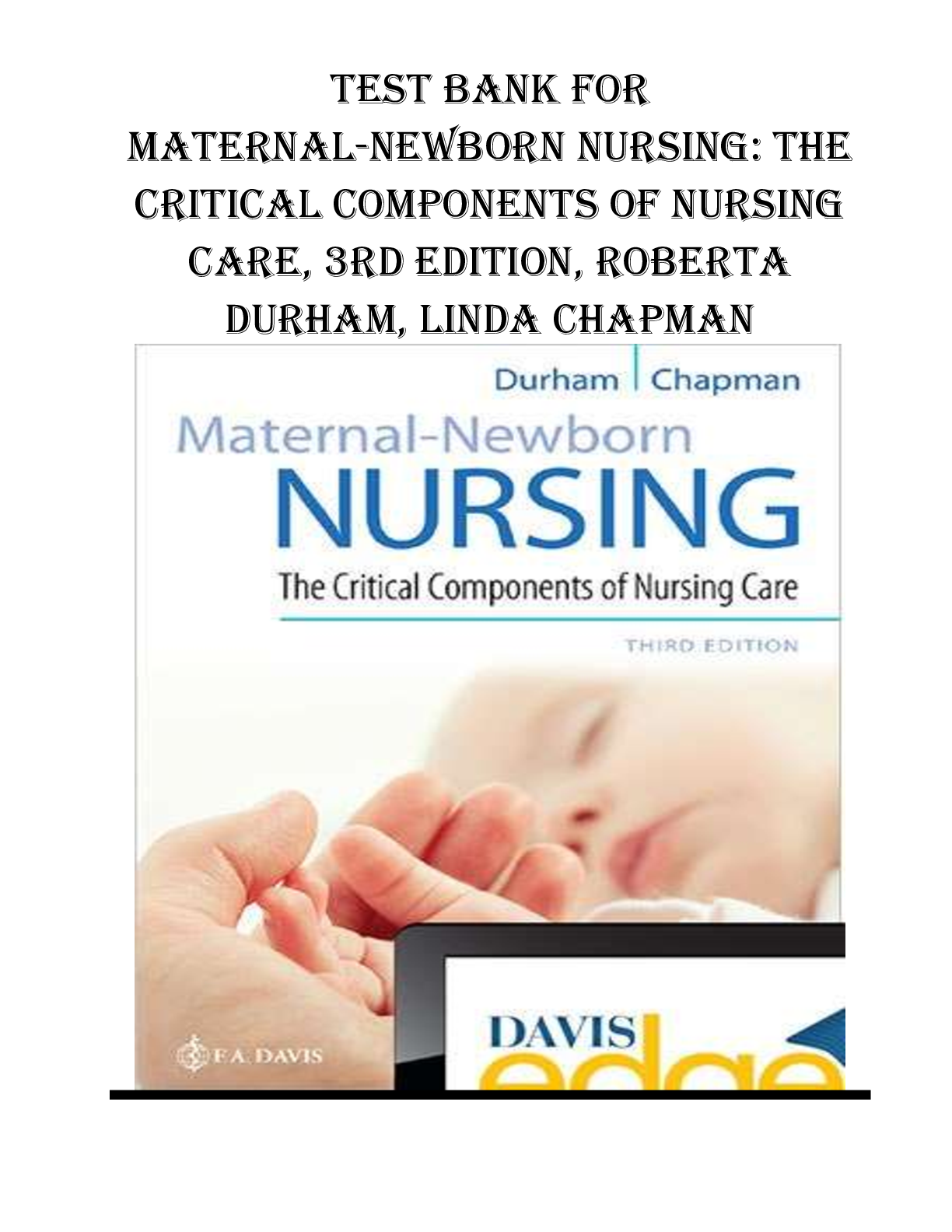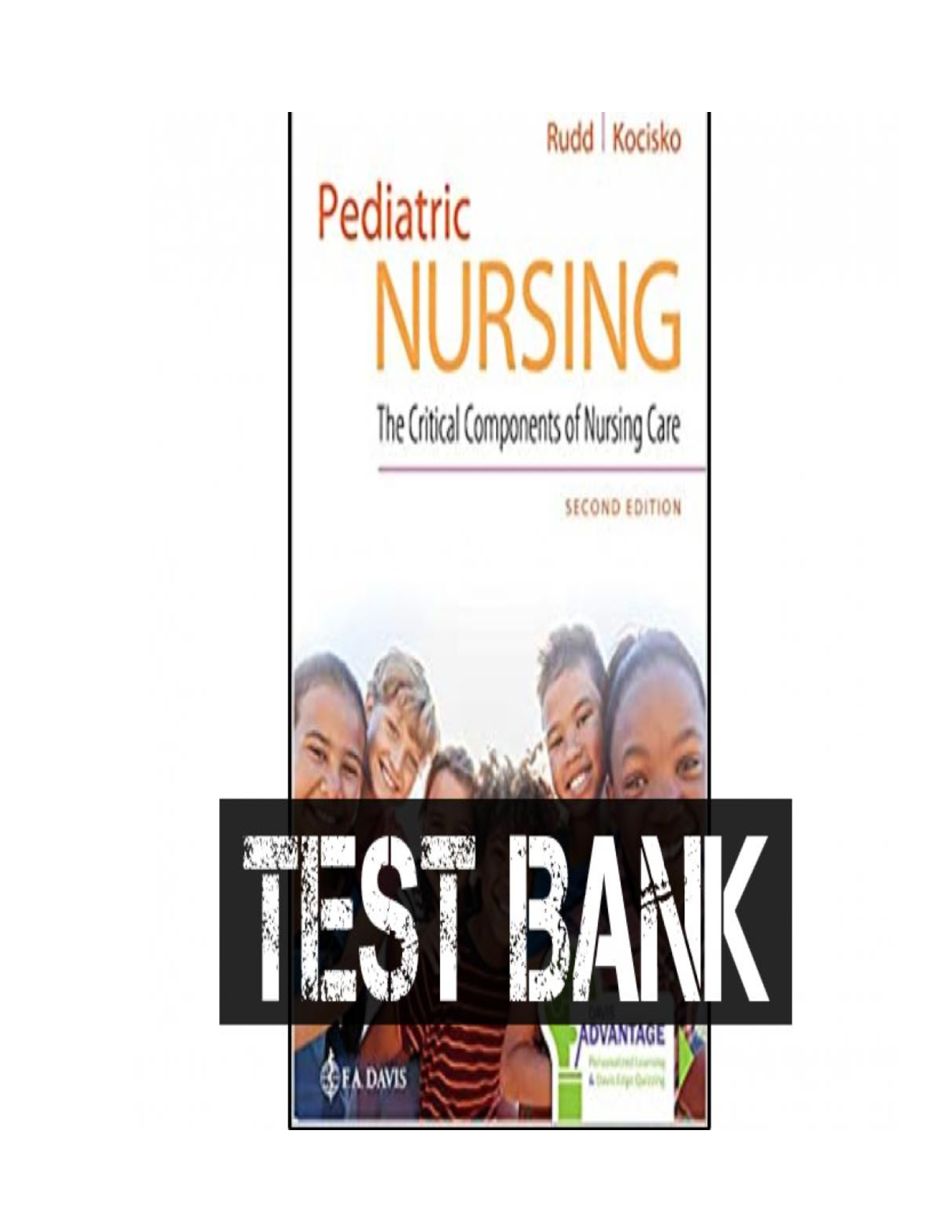NURSING PEDIATRICS > TEST BANK > Test Bank Pediatric Nursing: Critical Components of Nursing Care 3rd Edition Rudd (All)
Test Bank Pediatric Nursing: Critical Components of Nursing Care 3rd Edition Rudd
Document Content and Description Below
Rudd Davis Advantage for Pediatric Nursing 3e 1 Test Bank Ch01 Chapter 1 Issues and Trends in Pediatric Nursing Multiple Choice Identify the choice that best completes the statement or answers t... he question. 1. 2. 3. 4. The nurse has provided a presentation to middle school children about nursing as a career. One of the children stated that he wanted to be a pediatric nurse, because he wants to take care of babies and little “kids.” What would be an appropriate response to this middle school–aged child? 1. “Nursing is a general practice; all nurses must know how to take care of all ages of patients.” 2. “As a pediatric nurse, you would get to care for babies and little kids as well as children through their teenage years.” 3. “What you are describing is actually a neonatal nurse. Neonatal nurses work with newborn babies, toddlers, and preschool-age children.” 4. “Being a pediatric nurse requires a master’s degree, so be sure to work hard in school!” The medical-surgical float nurse is assigned to the pediatric unit for the first time and states that the skills are “the same as general nursing since children are little adults with smaller bodies.” What component of pediatric nursing contraindicates this statement? 1. Pediatric nursing involves care based on the developmental level of the patient. 2. Pediatric nursing involves the patient’s family in the plan of care. 3. Pediatric nursing in based on prevention of infectious diseases. 4. Pediatric nursing involves cultural sensitivity in patient care. The culturally sensitive pediatric nurse is aware of the racial makeup of the U.S. population. Which of the following reflects the demographics of the U.S. pediatric population in 2018, based on U.S. Census Bureau data? 1. The American Indian and Alaska Native population represent one-fifth of the pediatric population. 2. About half of the children fall in the category of something other than White nonHispanic. 3. The population of Asian children decreased from 2015 to 2018. 4. There was no change in the population of Non-Hispanic children who represent two or more races between 2015 and 2018. The nurse at a family clinic is providing care to an adolescent patient diagnosed with diabetes. The patient has verbalized discomfort with the feelings of isolation when unable to drink alcohol with their friends. Which of the following would be the most appropriate response to this statement? 1. “Drinking alcohol is not only illegal but dangerous for your blood sugar control and overall well-being.” 2. “You can still drink alcohol, in moderation, if you control the sugar spike with more insulin.” 3. “Prepare for alcohol intake with more water and less carbohydrates before drinking to slow sugar spikes.” 4. “It is understandable that you want to be included, but perhaps we can work out a plan on how to work through those situations.”Rudd Davis Advantage for Pediatric Nursing 3e 2 Test Bank Ch01 5. 6. 7. 8. 9. Which statement best describes the common core concepts of the different models of pediatric nursing? 1. All models focus on the open communication between the child and nurse. 2. All models focus on importance of family relationship to the child. 3. All models focus on safeguarding the child’s dignity during care. 4. All models focus on coordination of care needs that arise during illness. Which of the following tasks is associated with the pediatric medical home care model of pediatric nursing? 1. The nurse refers the family to a childhood cancer support group prior to discharge from the hospital. 2. The nurse includes a simple explanation of the procedure to the child based on the child’s developmental level. 3. The nurse includes the family’s cultural celebrations and observations while providing care to the child. 4. The nurse develops the plan of care with the child and family as the focal point of the interventions. The pediatric nurse begins a research project on 8-year-old patients with the medical diagnosis of pediatric acute-onset neuropsychiatric syndrome (PANS). The family has consented to the research, but as the nurse begins to administer the intervention, the patient refuses to cooperate. What is the appropriate response to this refusal? 1. The nurse should discuss with the family the options of performing the intervention without the child’s knowledge. 2. The nurse should explain to the child that this is necessary and promise a reward at the end of the research project. 3. The nurse should refuse to perform the intervention until the child consents to the intervention and project. 4. The nurse should discuss the pros and cons of the research project with the child [Show More]
Last updated: 5 months ago
Preview 1 out of 358 pages

Reviews( 0 )
Document information
Connected school, study & course
About the document
Uploaded On
Dec 07, 2023
Number of pages
358
Written in
Additional information
This document has been written for:
Uploaded
Dec 07, 2023
Downloads
0
Views
42

.png)
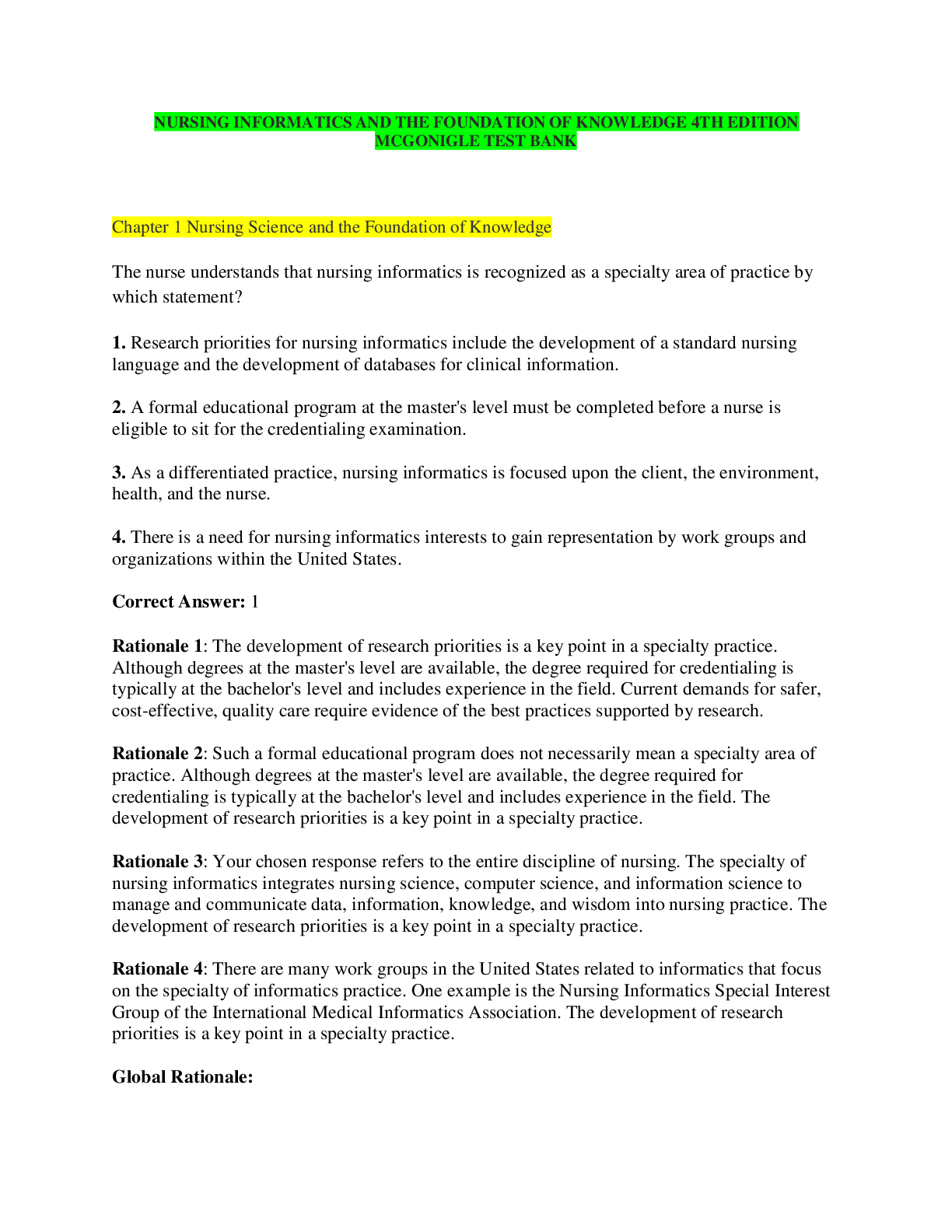
.png)
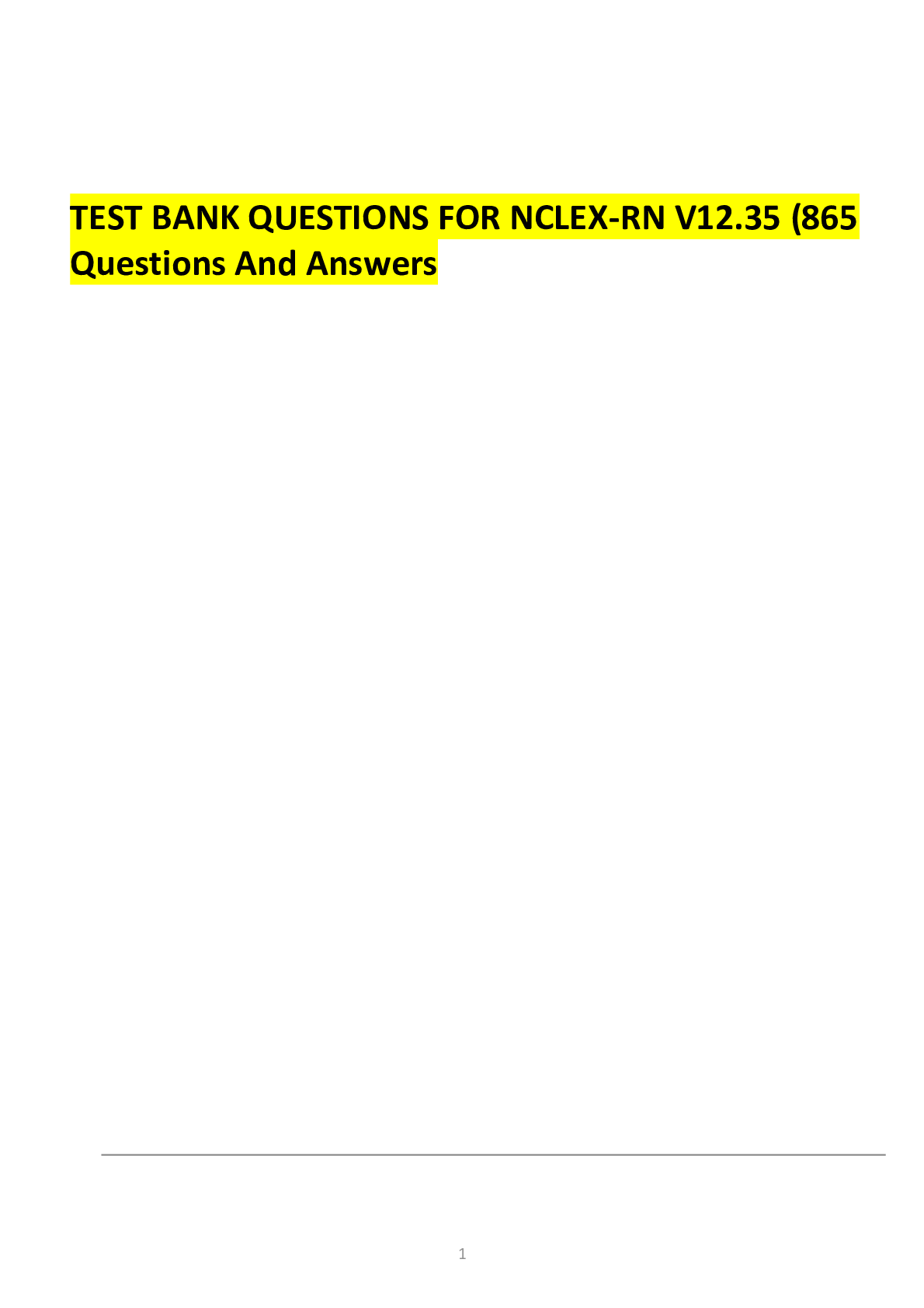


.png)
.png)


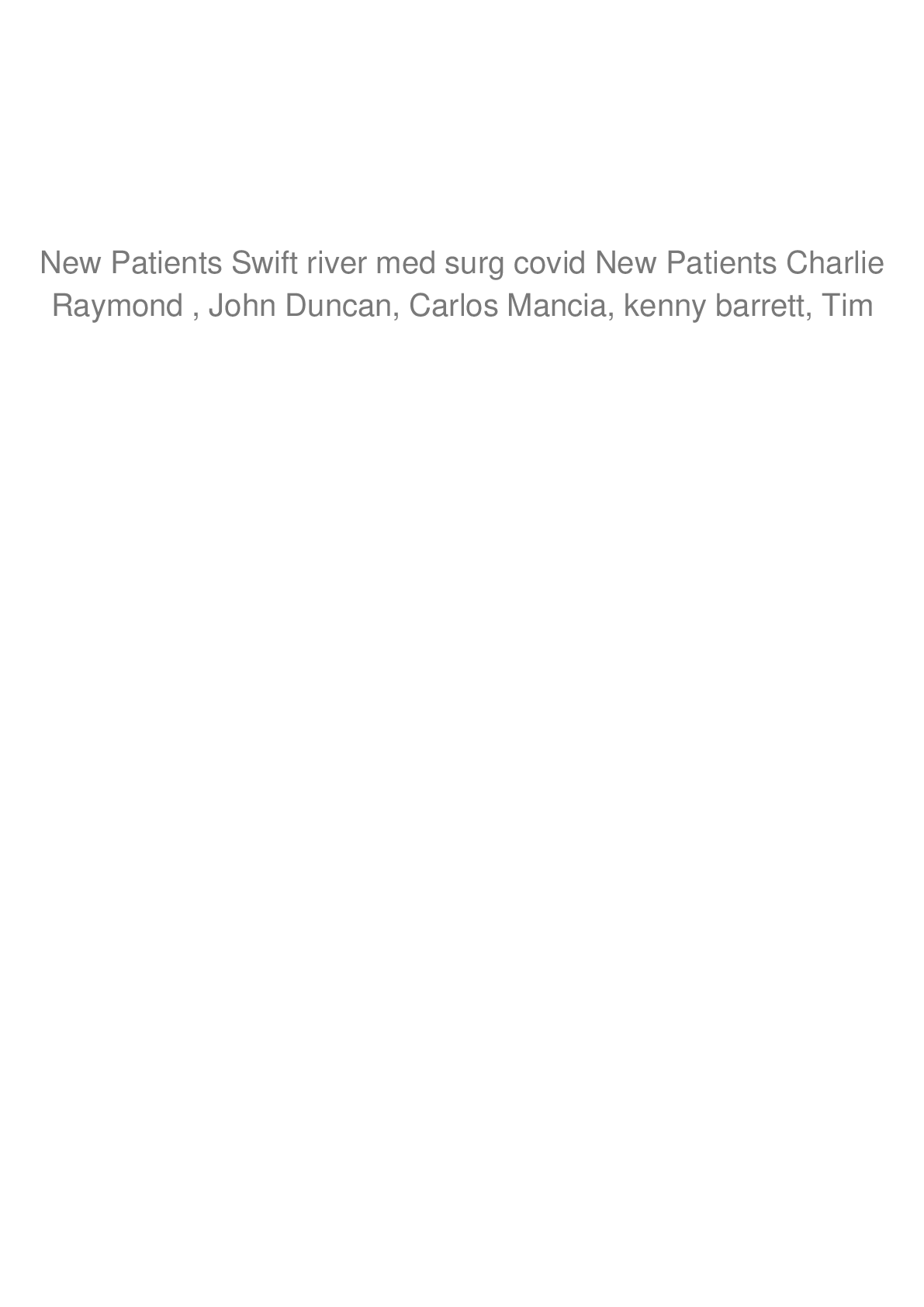
.png)
.png)
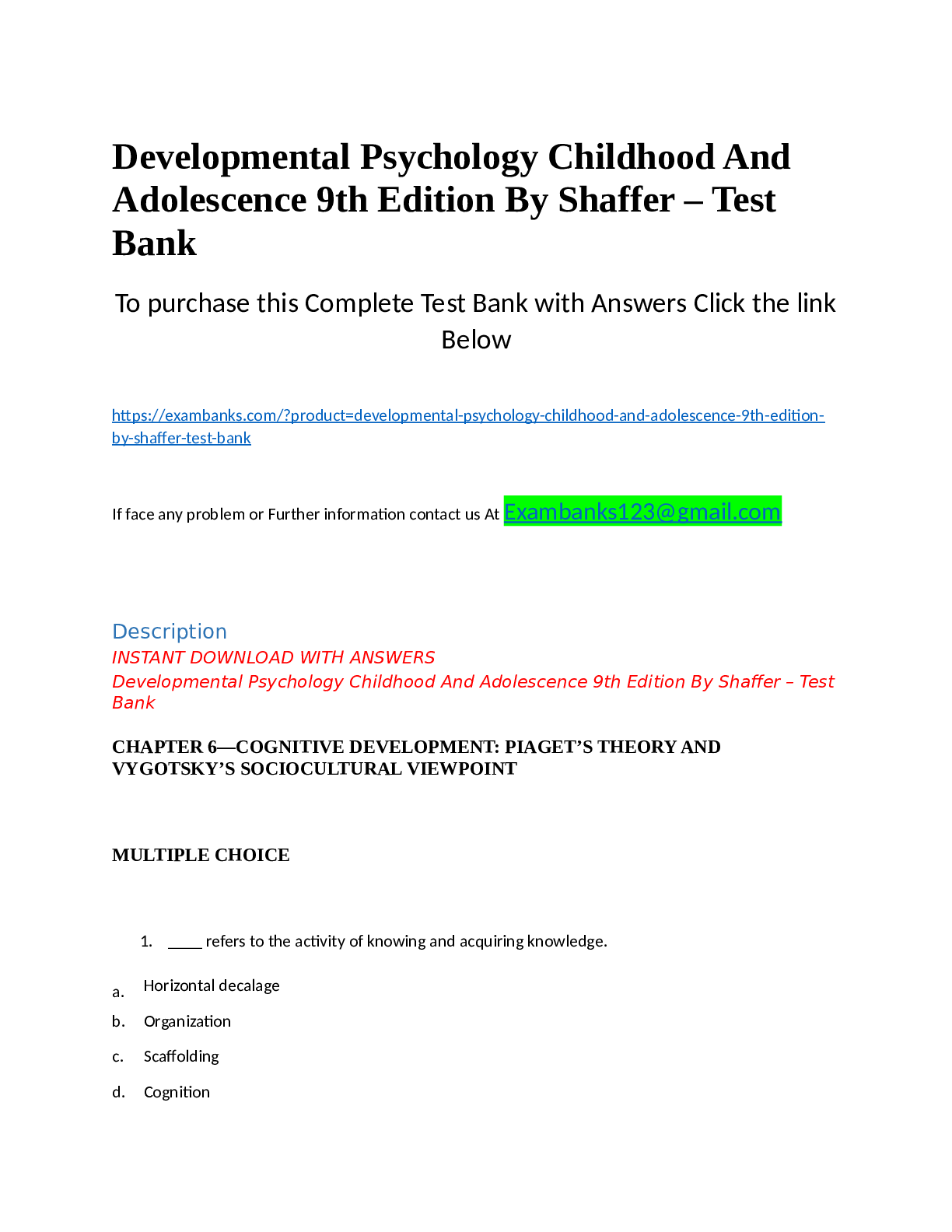
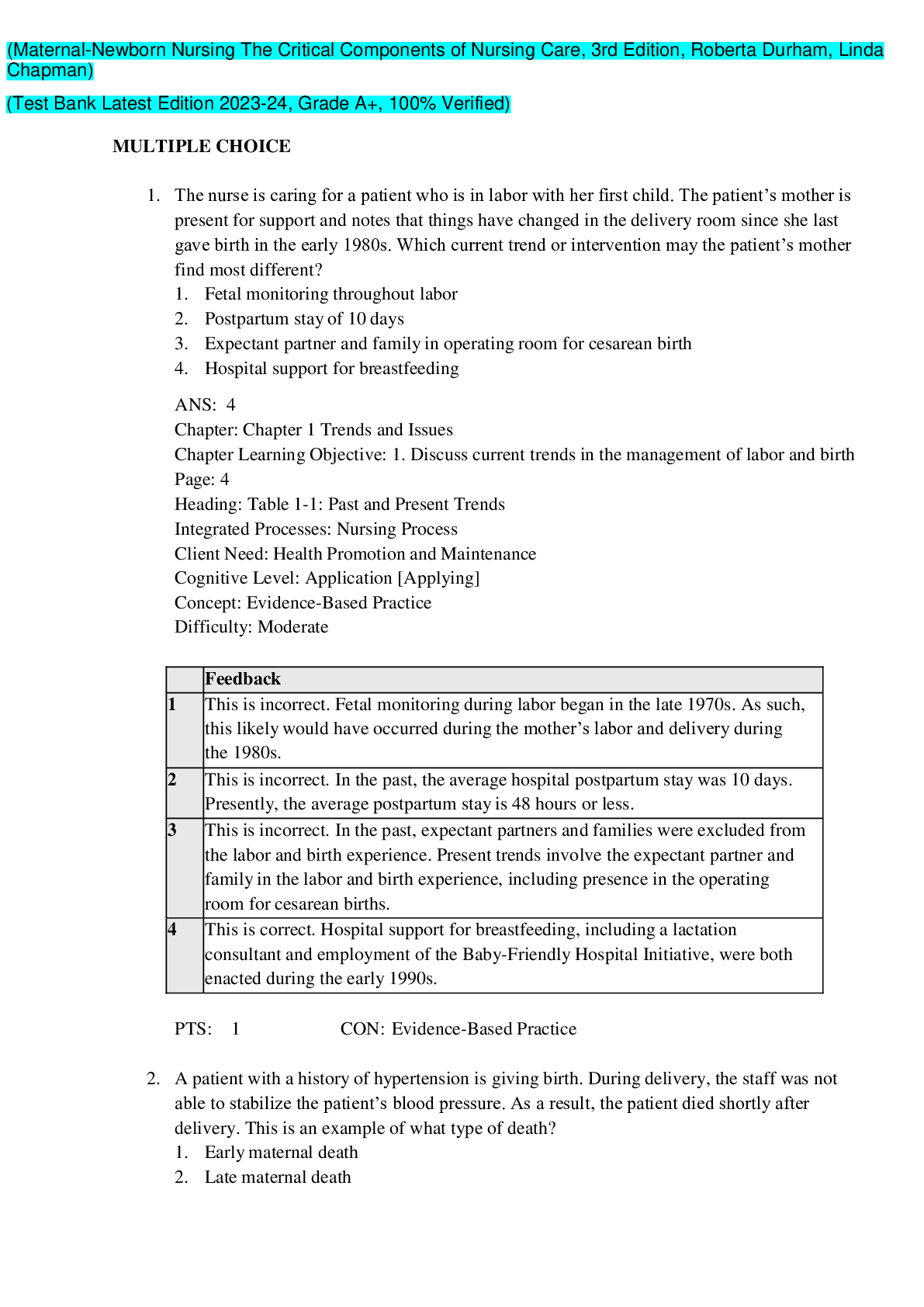

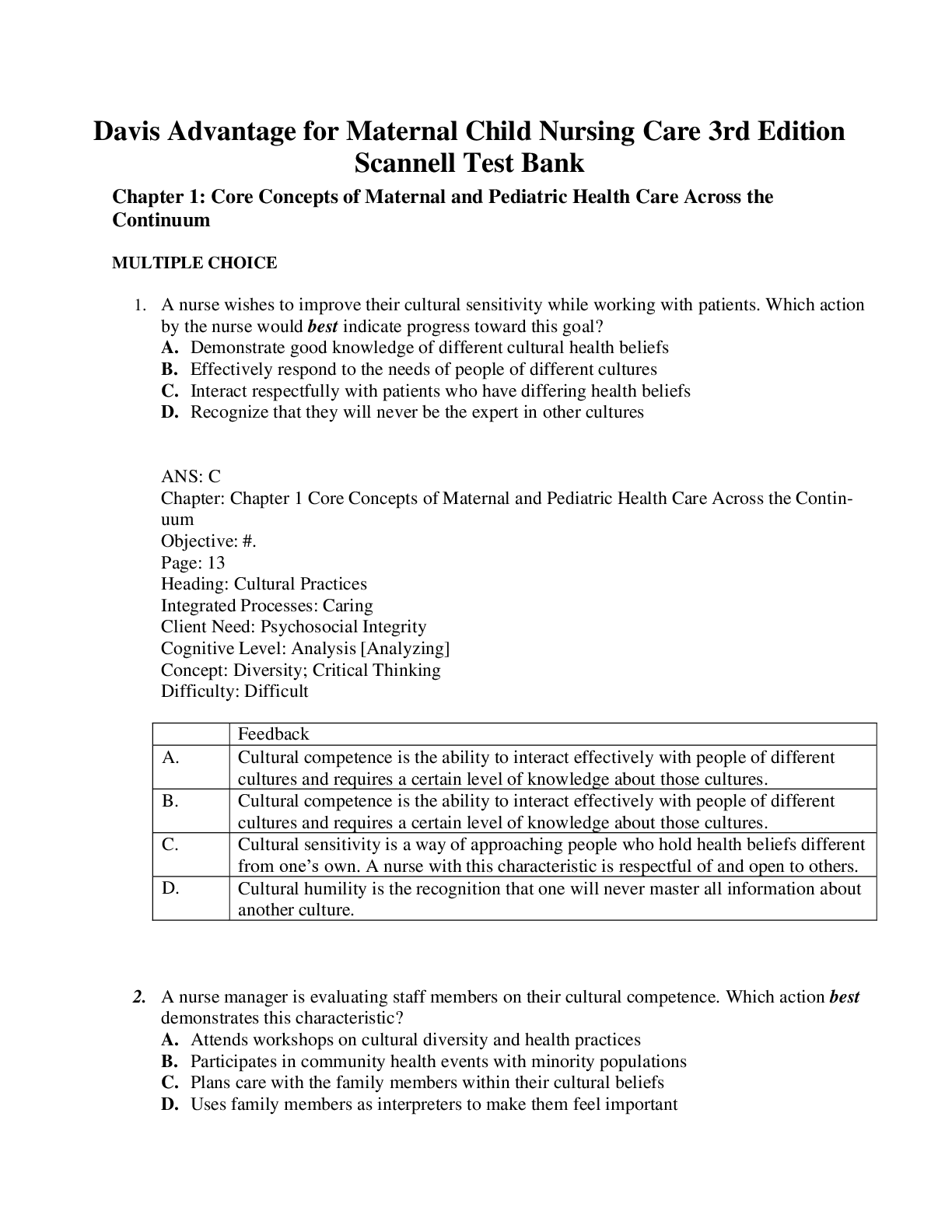
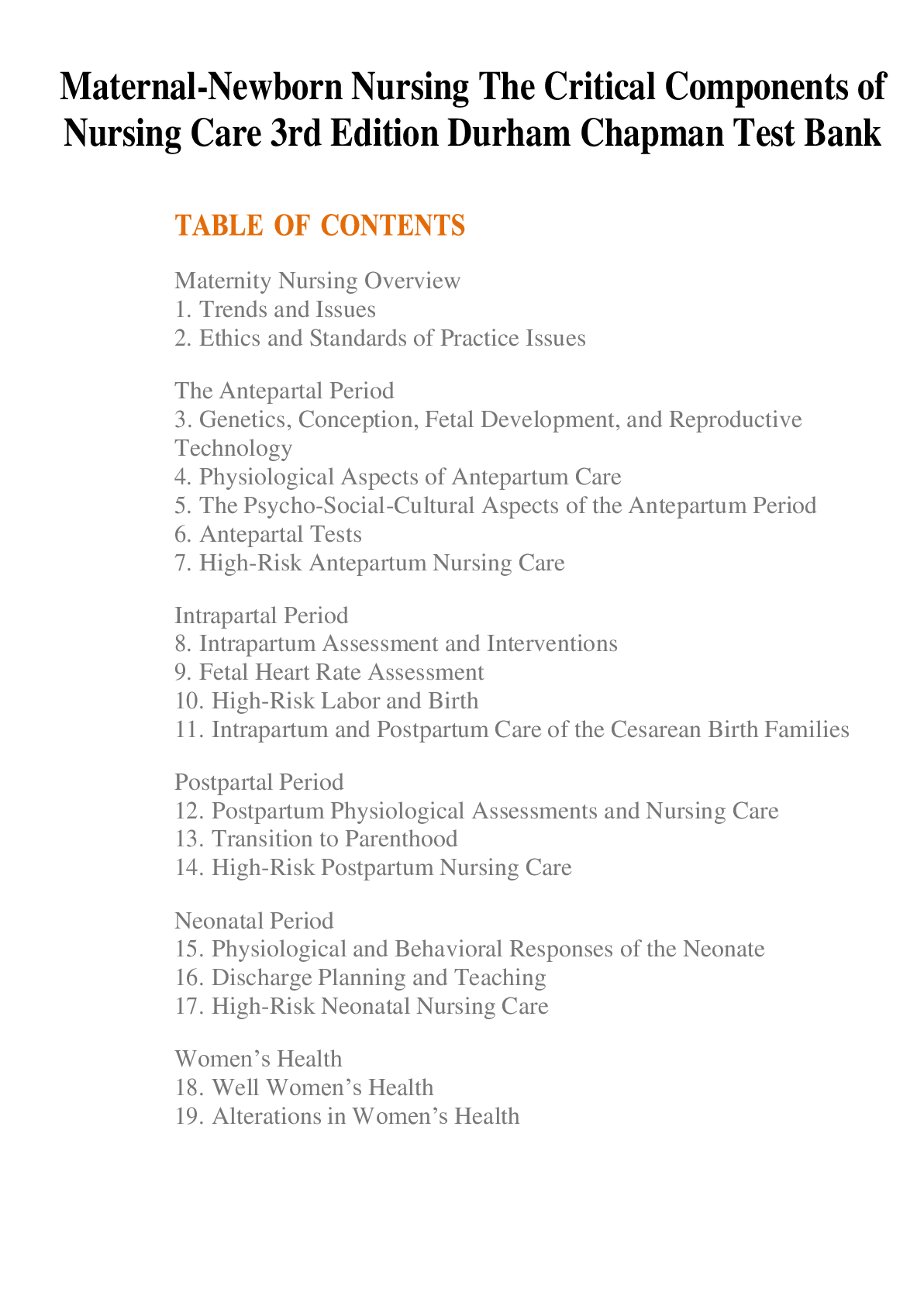
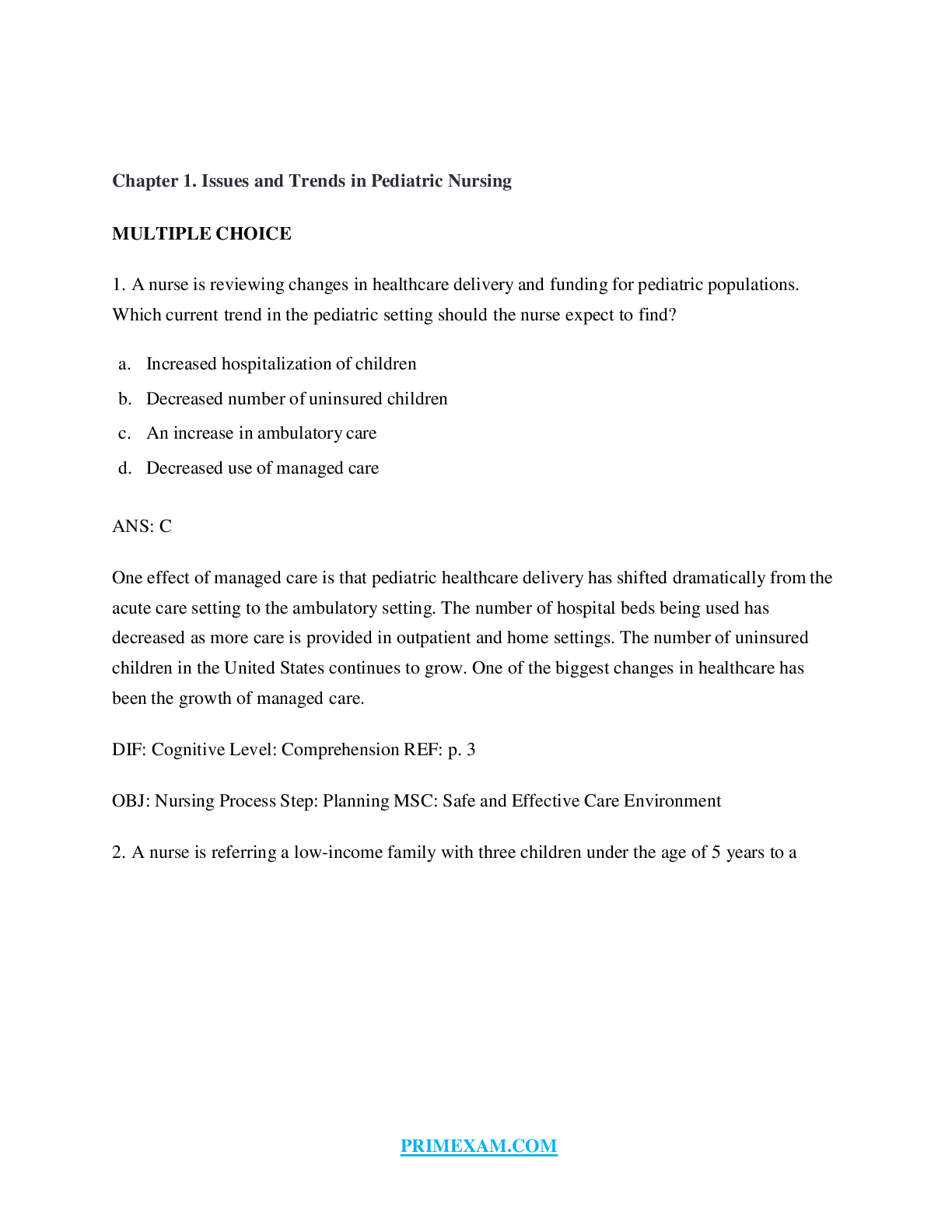
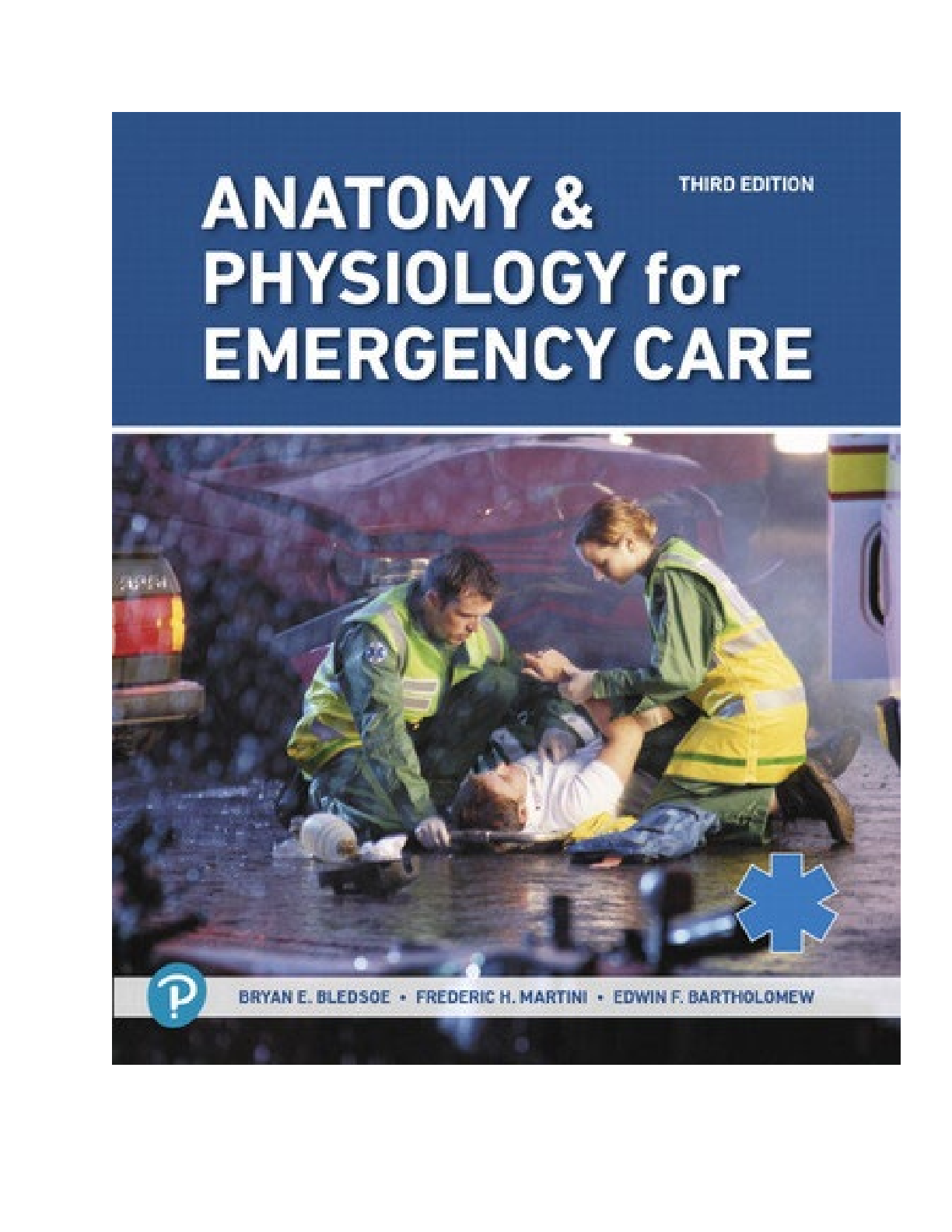
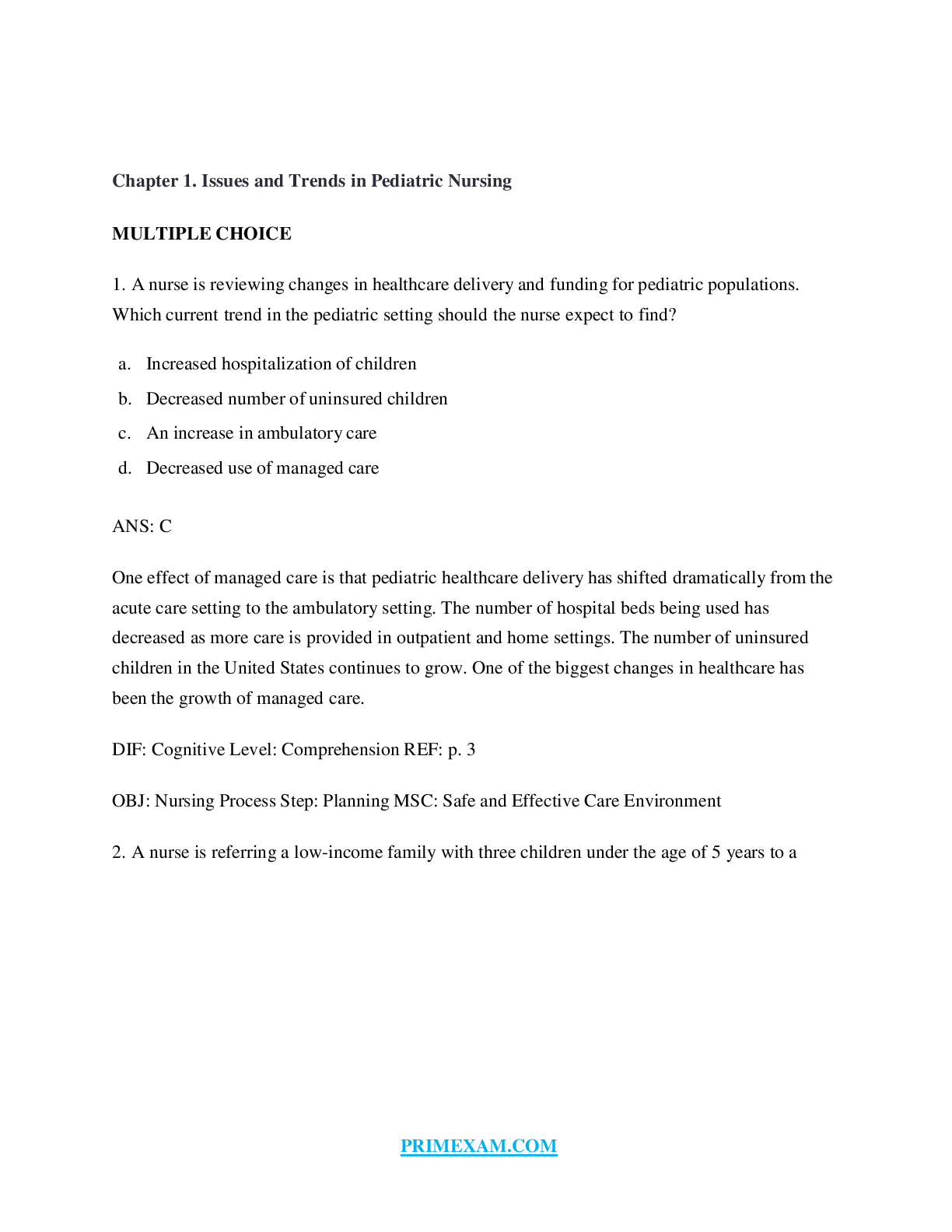
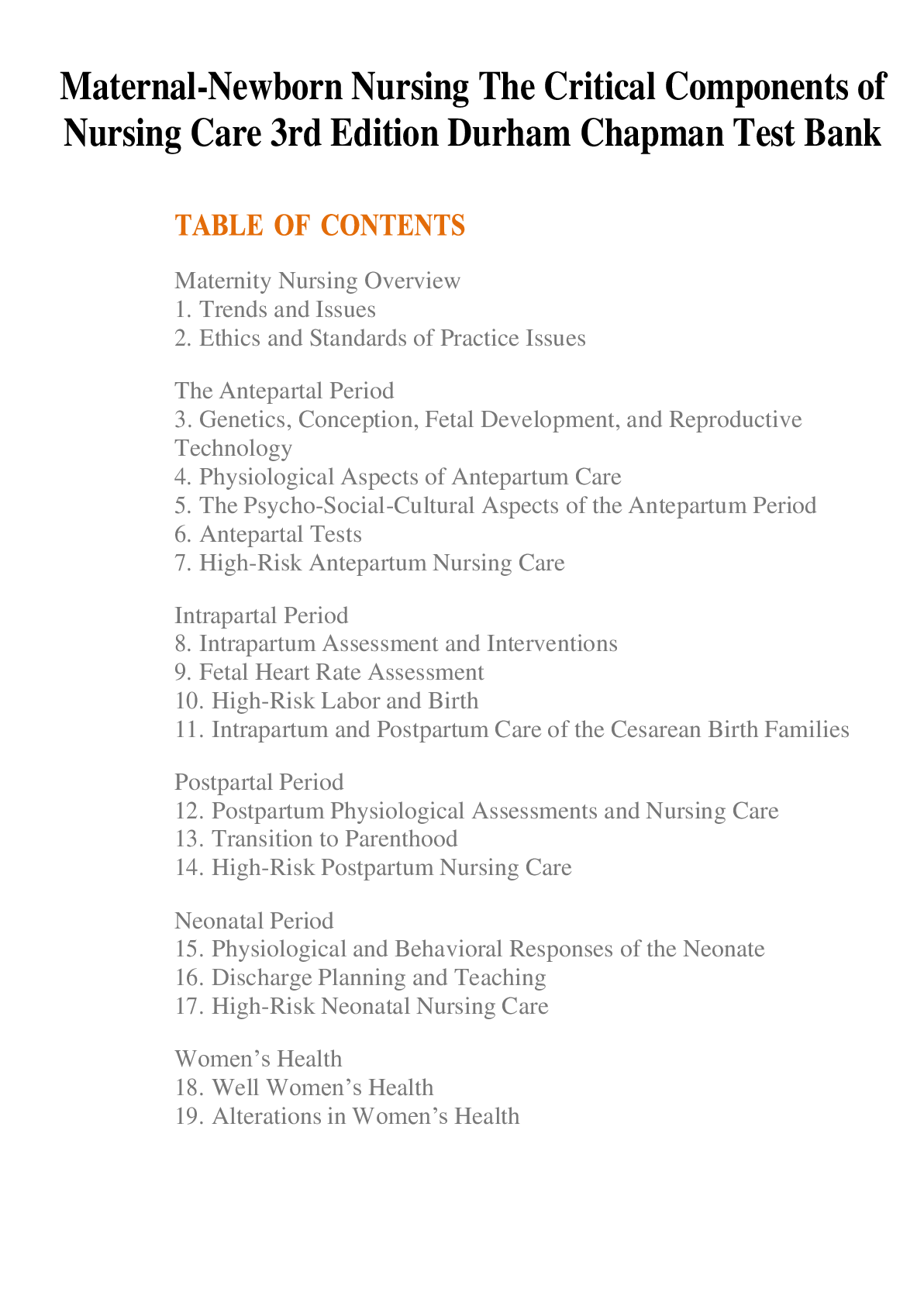

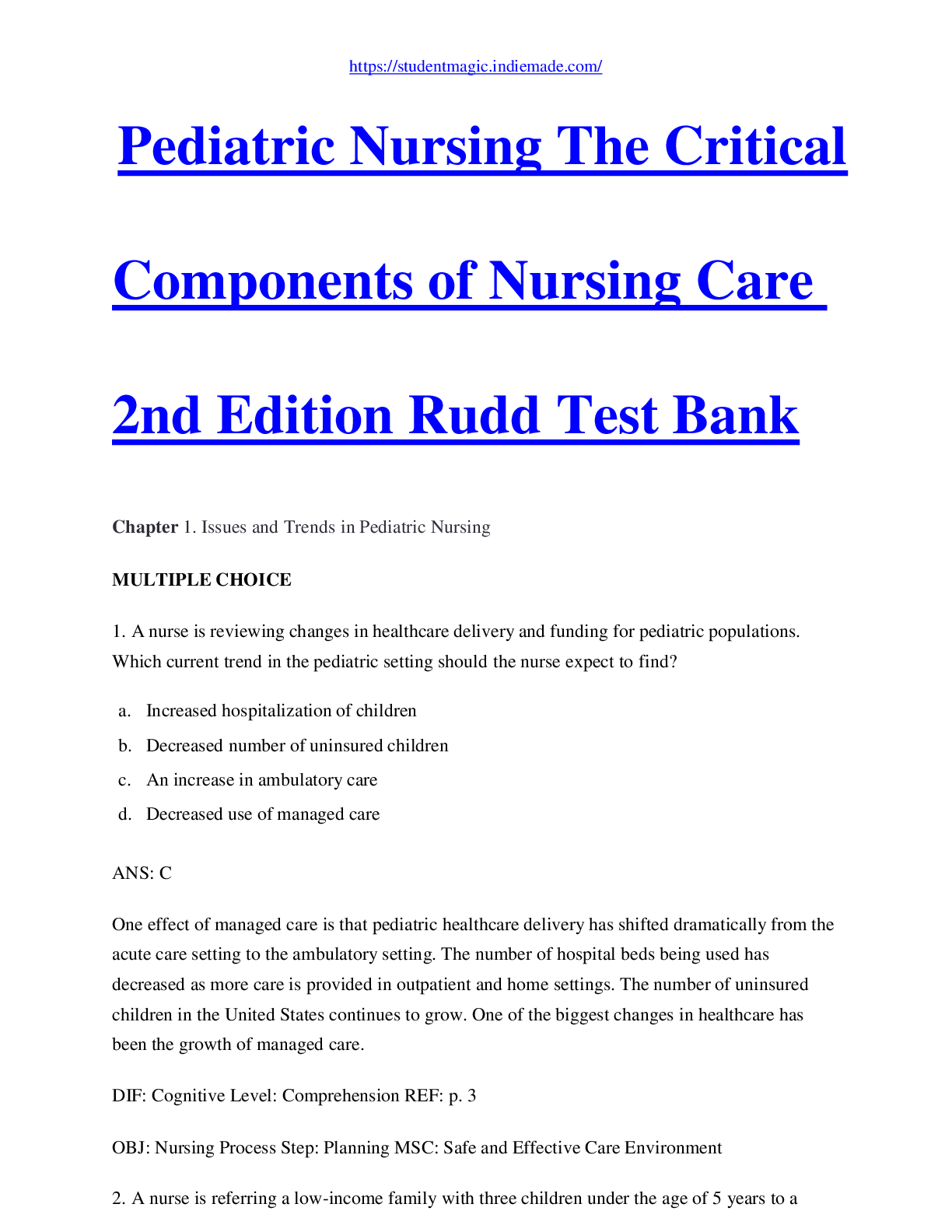


.png)
.png)
